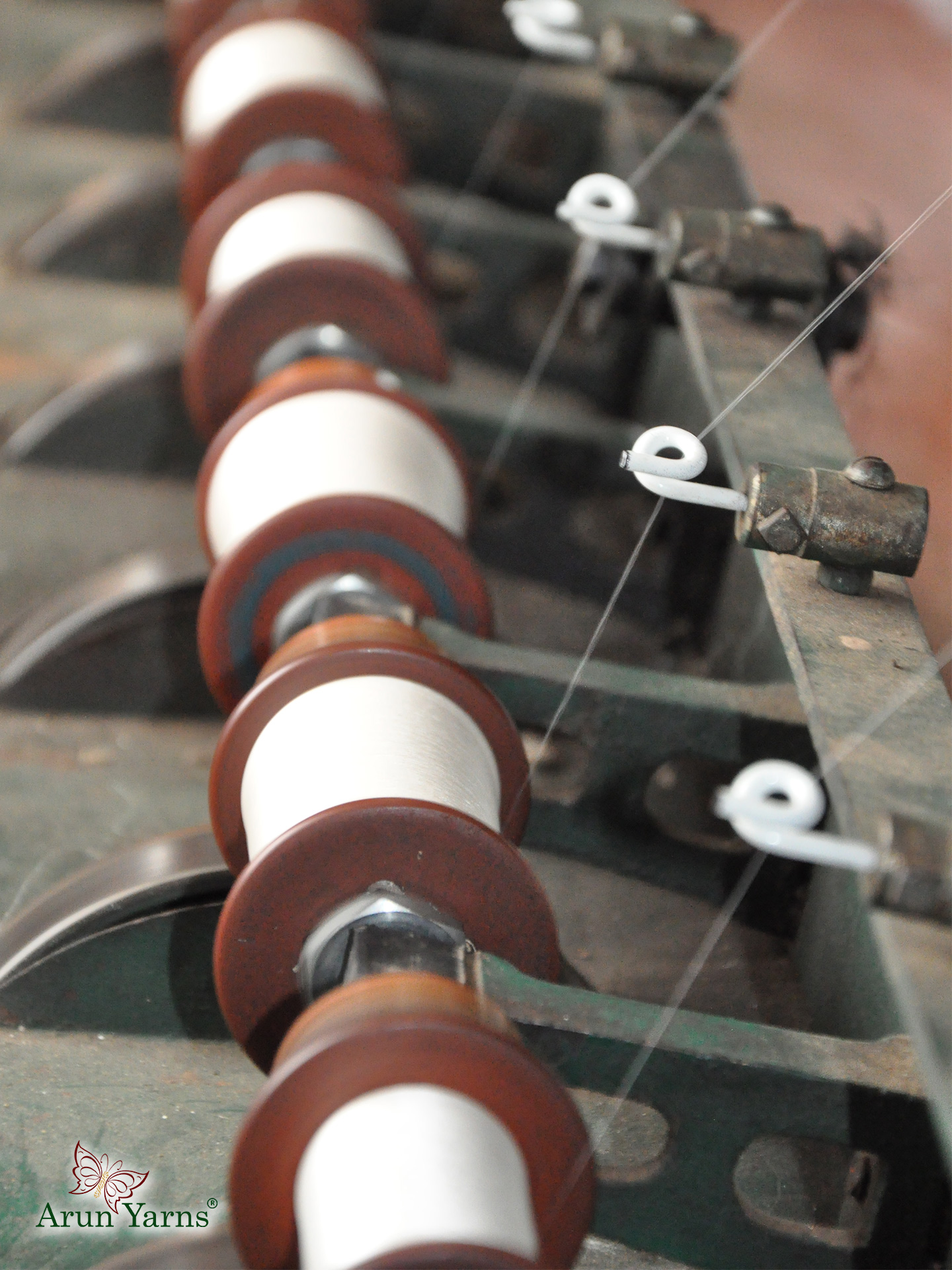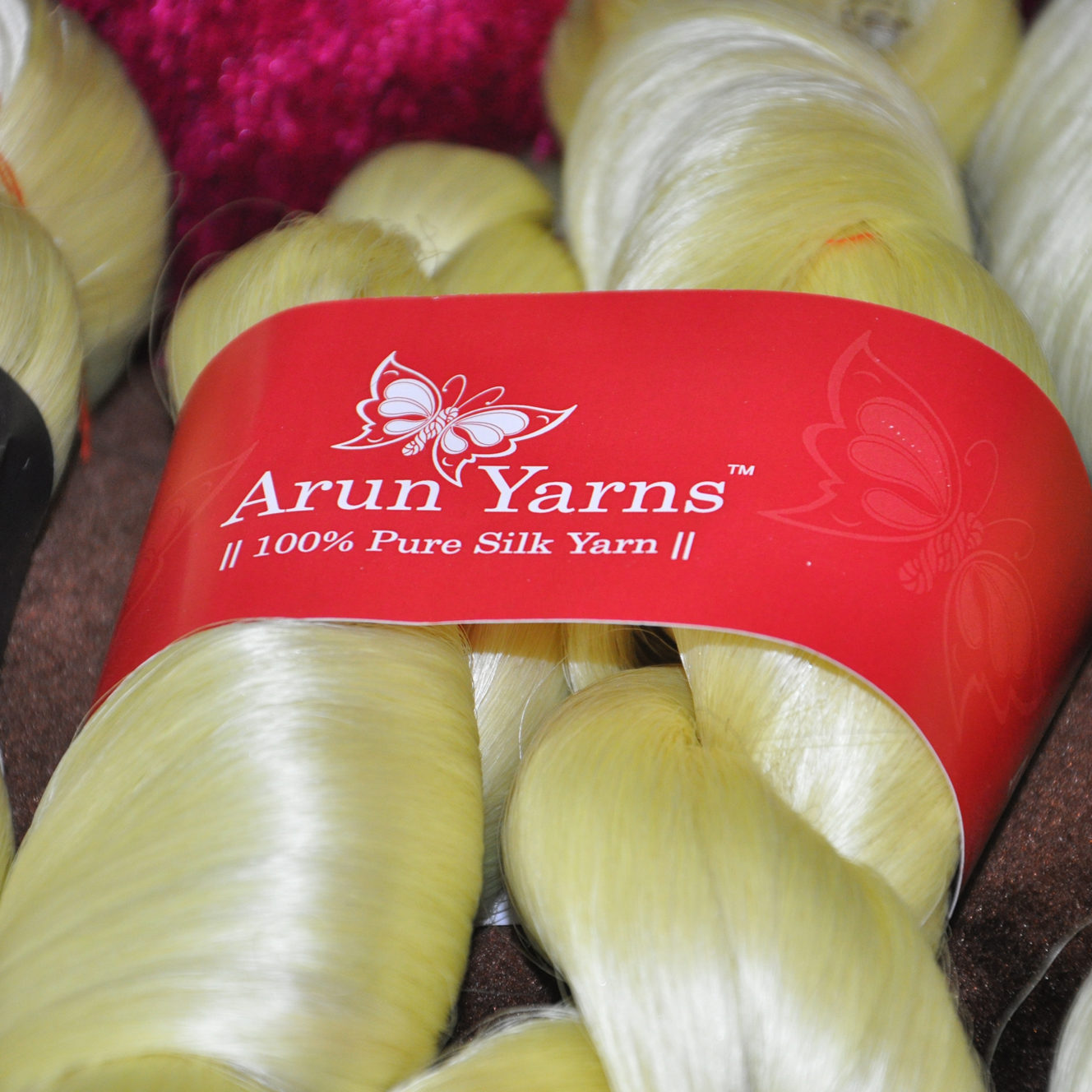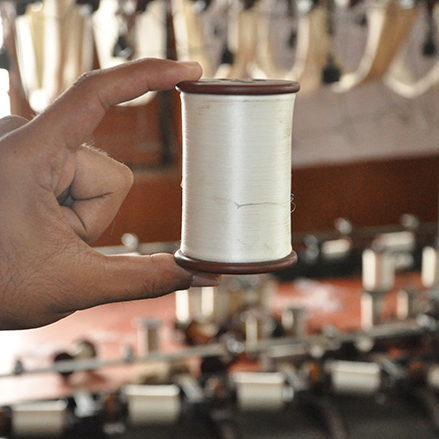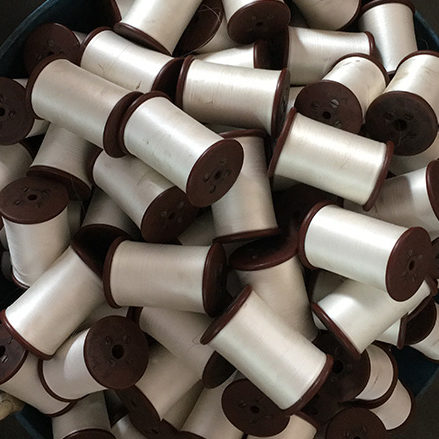Silk for life
We at Arun Yarns thrive to produce the best in class and quality of Indian Pure Silk Yarn. It has been our constant endeavour to put our best to promote the use of Indian silk.
Customer Satisfaction
Customer satisfaction has always been our prime objective. We in our consistent effort over a period of time have improved our methods to attain the goal of value creation for our customer with our diverse range of products and services.
Products
We have a distinct set of products to meet the demands of the Silk industry. This includes Raw Silk, Pure Silk Yarn, Warp, Weft and Jari. Contact us for further details, enquires and requirements.
Since 1993
About Us
Arun Yarns deal with manufacturing of 100% Mulberry Pure Silk Yarn. We are involved in deriving quality silk yarn from Indian Cocoons and then processing the same into Warp and Weft. We deal in various denier of raw silk ranging from 16-18. 18-20, 19-21. 20-22, 24-26 and 28-30. In the field of Twisted silk yarn, we deal with all the above denier with 2ply, 3ply 4ply and 5ply. We provide the same in Hanks and cone format. We also dye the yarn as per client needs.
Our most important aim is to satisfy our customers. Our research team constantly works along with customers and market feed back to improve our range of products to keep it in line with current trends.





About Silk and various kinds of Silk
Silk: The Queen of Textiles
Silk has always been a synonym for Luxury, Elegance Class and Comfort.
Silk is a natural protein fibre, some forms of which can be woven into textiles. The protein fibre of silk is composed mainly of fibroin and is produced by certain insect larvae to form cocoons. The best-known silk is obtained from the cocoons of the larvae of the mulberry silkworm. The shimmering appearance of silk is due to the triangular prism-like structure of the silk fibre, which allows silk cloth to refract incoming light at different angles, thus producing different colours.
Discovered in 3000BC Empress Hsi Ling Shi, wife of Emperor Huang Ti (also called the Yellow Emperor), was the first person to accidentally discover silk as weavable fibre. One day, when the empress was sipping tea under a mulberry tree, a cocoon fell into her cup and began to unravel. The Empress became so enamoured with the shimmering threads, she discovered their source, the Bombyx mori silkworm found in the white mulberry. The empress soon developed sericulture, the cultivation of silkworms, and invented the reel and loom. Thus began the history of silk.
Silks were originally reserved for the Emperors of China for their own use and gifts to others but spread gradually through Chinese culture and trade both geographically and socially, and then to many regions of Asia.
In India Silk is popularly known as Resham in eastern and north India and Pattu in southern parts of India. India is the second largest producer of silk in the world after China. Ramanagara about 50 kilometres from Bangalore is also regarded as "Silk City" and contributes to a majority of silk production in Karnataka.
India is also the largest consumer of silk in the world. The tradition of wearing silk sarees for marriages and other auspicious ceremonies is a custom in Assam and southern parts of India. Silk is considered to be a symbol of royalty, and, historically, silk was used primarily by the upper classes. Silk garments and sarees produced in Kanchipuram, Pochampally, Dharmavaram, Mysore, Arani in the south, Banaras in the north, Bhagalpur and Murshidabad in the east are well recognized.
Silk is widely used in Clothing, Home Décor and Medical Use.
There are five major types of silk of commercial importance, obtained from different species of silkworms which in turn feed on a number of food plants. These are:
- Mulberry, Oak Tasar & Tropical Tasar, Muga, Eri
Except for mulberry, other non-mulberry varieties of silks are generally termed as Vanya silks. India has the unique distinction of producing all these commercial varieties of silk
Next Steps...
Connect with us by clicking on the call to action button.



